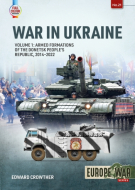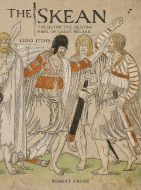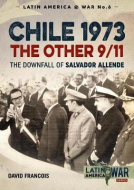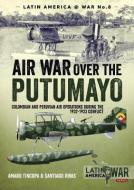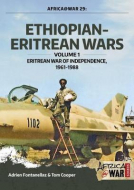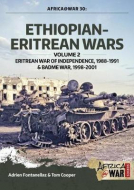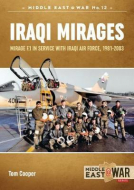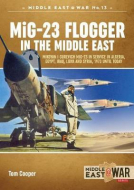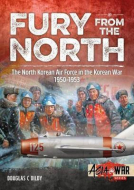
- Agriculture
- Architecture & Design
- Arts & Photography
- Biography
- Business
- Calendars and Diaries
- Childrens (All)
- Childrens (Illustrated)
- Childrens (Picture flats)
- Childrens (Te Reo)
- Classics
- Cooking, Food & Drink
- Craft & Hobbies
- Design (Art / Graphics)
- Design (Interiors)
- Education
- Fashion
- Fiction & Literature
- Fiction - Young Adult
- Gift Ideas
- Health & Wellbeing
- History
- Home & Garden
- Humour & Gift
- Instead of a Card Poems
- Military
- Music
- New Zealand
- NZ (History)
- NZ (Landscapes)
- NZ (Pictorial)
- Poetry
- Reference
- Religion & Faith
- Science & Nature
- Sport & Recreation
- Stationery
- Taschen : 40th Anniversary Edition
- Taschen : BA Basic Art
- Taschen : BU Bibliotheca Universalis
- Te Reo Māori
- Transport
- Travel
History (457)
|
War in Ukraine Vol 1 - Europe at War 21
ISBN: 9781915070661 Author: Edward Crowther Publisher: Helion & Company Armed Formations of the Donetsk People's Republic, 2014 - 2022 Volume 1 of War in Ukraine focuses on the armed formations of the Donetsk People’s Republic (DP... Armed Formations of the Donetsk People's Republic, 2014 - 2022 Volume 1 of War in Ukraine focuses on the armed formations of the Donetsk People’s Republic (DPR), the largest of the two separatist entities in the east of Ukraine. Armed formations of the Donetsk People’s Republic aims to provide an overview of their formation in 2014, their status up to the end of February 2022, and combat equipment, while also exploring issues around identity and symbology. Loosely confederated with the armed formations of the neighbouring Luhansk People’s Republic into the so-called ‘United Armed Forces of Novorossiya’, in reality the armed formations of the Donetsk People’s Republic have retained a degree of autonomy over their units and planning. Often dismissed in existing literature as mere proxy extensions of Russian forces, since their formation in the fighting in eastern Ukraine during 2014 the armed formations of the Donetsk People’s Republic have developed into an integrated fighting force with more main battle tanks than several major Western military powers combined. The title also details some of the key military commanders who have shaped the armed formations of the Donetsk People’s Republic since 2014. One area of focus of the title explores the unusual and little-known ‘home grown’ military technological developments made by the Donetsk People’s Republic, including multiple launch rocket systems, armoured vehicles, sniper rifles, small arms and remote weapons stations. The emerging visual propaganda culture around the armed formations of the Donetsk People’s Republic is also explored, with military glory and fallen personnel commemorated in large scale military parades, murals, monuments and even postage stamps. War in Ukraine Volume 1: Armed formations of the Donetsk People’s Republic also presents a wealth of unique visual material including unit patches, a selection of unique photographs, diagrams and maps, and will be of interest to anyone studying the conflict in Ukraine. "This is a very useful work of reference for modellers and historiansm as well as those with an interest in current affairs, it it throws light into an area that not much is known of." IPMS, Issue 5 2022 "A great reference for those looking to model DPR armor and weaponry-- there are tons of photos of unit patches and insignias, and the color profiles feature DPR technicals, trucks, MBTs, APCs, and other AFVs." AMPS Bind: paperback Pages: 78 Dimensions: 210 x 297 x 5 mm |
$49.99 |
|
|
The Skean : The Distinctive Fighting Knife of Gaelic Ireland 1500-1700
ISBN: 9780764366376 Author: Robert Gresh Publisher: Schiffer Books This is the history of the distinctive fighting knife of the Gaelic Irish, the skean (Irish: scian). Author Robert Gresh has scoured primary sources for referen... This is the history of the distinctive fighting knife of the Gaelic Irish, the skean (Irish: scian). Author Robert Gresh has scoured primary sources for references to the weapon in use and travelled to examine the known surviving examples. The skean fell into disuse in the 18th century without being well documented, and surviving examples are often out of sight in reserve collections, private collections, or small local museums. Today, the skean is sought after by reenactors and collectors, but before now, there has not been any definitive work on the subject. This study is intended to aid collectors and curators in the identification of original artifacts, while also assisting fabricators in the creation of replica pieces. Also included is information on manufacturing and fighting techniques. Bind: hardback Pages: 80 Dimensions: 228 x 304 mm Publication Date: 28-05-2023 |
$59.99DUE > 1st Sep 2023 |
|
|
Chile 1973 (Latin America@War 6)
ISBN: 9781912174959 Author: David Francois Publisher: Helion & Company In 1970, Salvador Guillermo Allende Gossens, a physician and leftist politician, was elected the President of Chile. Involved in political life for nearly 40 ye... In 1970, Salvador Guillermo Allende Gossens, a physician and leftist politician, was elected the President of Chile. Involved in political life for nearly 40 years, Allende adopted a policy of nationalization of industries and collectivization - measures that brought him on a collision course with the legislative and judicial branches of the government, and then the center-right majority of the Chilean Congress. Before long, calls were issued for his overthrow by force. Indeed, on 11 September 1973, the military - supported by the Central Intelligence Agency (CIA) of the USA - moved to oust Allende, and surrounded La Moneda Palace. After refusing a safe passage, Allende gave his farewell speech on live radio, and La Moneda was then subjected to air strikes and an assault by the Chilean Army. Allende committed suicide. Following Allende's death, General Augusto Pinochet installed a military junta, thus ending almost four decades of uninterrupted democratic rule in the country. His repressive regime remained in power until 1990. Starting with an in-depth study of the Chilean military, paramilitary forces and different leftist movements in particular, this volume traces the history of the build-up and the ultimate clash during the coup of 11 September 1973. Providing minute details about the motivation, organization and equipment of all involved parties, it also explains why the Chilean military not only launched the coup but also imposed itself in power, and how the leftist movements reacted Illustrated with over 100 photographs, color profiles, and maps describing the equipment, colors, markings and tactics of the Chilean military and its opponents, it is a unique study into a well-known yet much under-studied aspect of Latin America's military history. Bind: paperback Pages: 72 Dimensions: 210 x 297 mm Publication Date: 18-05-2018 |
$49.99 |
|
|
Mexicans at War (Latin America@War 9)
ISBN: 9781912390069 Author: Santiago Flores Publisher: Helion & Company This book introduces the reader to an unknown Ally of the Second World War. Few people remember that Mexico, like Brazil, took an active part in that conflict. ... This book introduces the reader to an unknown Ally of the Second World War. Few people remember that Mexico, like Brazil, took an active part in that conflict. This volume covers Mexican participation in the Second World War for the first time using photos, documents and testimony from official and personal archives. Mexican nationals or those of Mexican descent were already volunteering for the Allied air forces of the British Commonwealth and the Free French naval and air forces While the Mexican Republic first had to defend both its coasts and its shipping from enemy submarines, using its obsolete general purpose biplanes, following the sinking of Mexican ships by German u-boats the first North American Texan armed trainers entered service in the Gulf of Mexico, earning the title of the 'Mexican Dive Bomber'. Due to the necessities of the war, the service had to reorganize its aviation assets to be able to receive a larger number of American-built lease aircraft, which started the modernization and reorganization process that is felt even today. The war affected all aspect of Mexican military aviation from tactical units, to training, to logistics and military doctrine. This also led to the establishment of Mexican Naval Aviation which led, in turn, to the creation of its first naval squadron to patrol the Gulf of Mexico. One aspect that the war affected was the training of the new generation of military personnel, some of whom would later see action before the end of the war. As Mexico was securing its coasts and sending aviation personnel to train in the USA, it would later field its fighter squadron to participate in the liberation of the Philippine islands. By the end of the war the Mexican Air Force had experienced its most rapid growth since it was officially established back in February 1915. The text is fully supported by numerous previously unpublished photographs and color profiles showing camouflage and markings. Bind: paperback Pages: 232 Dimensions: 210 x 297 mm Publication Date: 04-01-2019 |
$79.99 |
|
|
Air War over the Putumayo (Latin America@War 7)
ISBN: 9781912390236 Author: Amaru Tincopa Publisher: Helion & Company During 1932, the occupation of the Colombian towns of Leticia and Tarapacá by Peruvian troops and civilians, in the Amazon region, led to a conflict that almos... During 1932, the occupation of the Colombian towns of Leticia and Tarapacá by Peruvian troops and civilians, in the Amazon region, led to a conflict that almost ended in a total war between both countries. Aviation played an important role on both sides, due to the complicated jungle environment, which makes any land movements almost impossible. After some ground and air combats, a ceasefire was agreed and the conflict was resolved. But the war over the Putumayo area became the baptism of fire for the Peruvian and Colombian air forces, leading, in the second case, to the development of its military aviation, which was almost nonexistent in 1932. For Peru, the result of the conflict was also a rearming process, which proved important when in 1941 it entered into war with Ecuador. This book is supported by a large number of rare and previously unpublished images, and specially commissioned color profiles showing camouflage and markings. Bind: paperback Pages: 96 Dimensions: 210 x 297 mm Publication Date: 29-08-2018 |
$49.99 |
|
|
Ethiopian-Eritrean Wars Volume 1 (Africa@War 29)
ISBN: 9781912390298 Author: Adrien Fontanellaz Publisher: Helion & Company Ethiopia, a country of ancient origins in eastern Africa, has remained a military powerhouse of that continent until the present day. Currently involved in the ... Ethiopia, a country of ancient origins in eastern Africa, has remained a military powerhouse of that continent until the present day. Currently involved in the war in neighboring Somalia, Ethiopia was also involved in half a dozen of other armed conflicts during the last 60 years. One of the most significant was the Eritrean War of Independence. Fought 1961-1991, this was one of the biggest armed conflicts on the African continent, especially if measured by numbers of combatants involved. It included a wide spectrum of operations, from 'classic' counter-insurgency (COIN) to conventional warfare in mountains - with the latter being one of the most complex and demanding undertakings possible to conduct by a military force. Campaigns run during the Eritrean War of Independence often included large formations of relatively well-equipped forces, led by well-trained commanders, utilizing complex plans based on homegrown doctrine. Airpower played a crucial - although not necessarily decisive - role in many of battles. Nevertheless, most of details about this conflict remain unknown to the wider public. Similarly, relatively few Western observers are aware of relations between the Eritrean liberation movements, and various dissident and insurgent movements inside Ethiopia - although the synergy of these eventually led the downfall of the so-called Derg government, in 1991. Reaching back to extensive studies of Ethiopian and Eritrean military history, this volume provides a detailed account of the first 25 years of this conflict: from the outbreak of armed insurgency in 1961 until the crucial battle of Afabet, in 1988. It is illustrated by over 100 contemporary photographs, maps and color profiles. Bind: paperback Dimensions: 210 x 297 mm Publication Date: 19-04-2018 |
$49.99 |
|
|
Ethiopian-Eritrean Wars Volume 2 (Africa@War 30)
ISBN: 9781912390304 Author: Adrien Fontanellaz Publisher: Helion & Company Ethiopia, a country of ancient origins in eastern Africa, remains a military powerhouse of that continent until our days. Nowadays involved in the war in neighb... Ethiopia, a country of ancient origins in eastern Africa, remains a military powerhouse of that continent until our days. Nowadays involved in the war in neighboring Somalia, Ethiopia was also involved in half a dozen of other armed conflicts over the last 60 years. Crucial between these was the Eritrean War of Independence. Fought 1961-1991, this was one of biggest armed conflicts on the African continent, especially if measured by numbers of involved combatants. It included a wide spectrum of operations, from 'classic' counterinsurgency (COIN) to conventional warfare in mountains - with the latter being one of the most complex and most demanding undertakings possible to conduct by a military force. Campaigns run during the Eritrean War of Independence often included large formations of relatively well-equipped forces, led by well-trained commanders, along well-thought-out plans, based on homegrown doctrine. The air power played a crucial - although not necessarily decisive - role in many of battles. Nevertheless, most of details about this conflict remain unknown in the wider public. Similarly, relatively few Western observers are aware of relations between the Eritrean liberation movements, and various dissident and insurgent movements inside Ethiopia - although the synergy of these eventually led the downfall of the so-called Derg government, in 1991. While the first volume in this mini-series spanned the history of wars between Ethiopia and Eritrea between 1961 and 1988, the second covers the period since. Correspondingly, it is providing coverage of military operations that led to the fall of the Derg government in Ethiopia of 1991, the period of Eritrean military buildup and a complete reorganization of the Ethiopian military in the 1990s, and concludes with the first detailed account of the so-called Badme War, fought between Ethiopia and Eritrea in period 1998-2001. Bind: paperback Pages: 80 Dimensions: 210 x 297 mm Publication Date: 31-07-2018 |
$49.99 |
|
|
Iraqi Mirages (Middle East@War 17)
ISBN: 9781912390311 Author: Tom Cooper Publisher: Helion & Company Originally envisaged as a privately funded project for a possible future NATO-fighter, the Dassault Mirage F.1 evolved into one of the most aesthetically attrac... Originally envisaged as a privately funded project for a possible future NATO-fighter, the Dassault Mirage F.1 evolved into one of the most aesthetically attractive and commercially most successful combat aircraft of the 1970s and 1980s. Developed into more than a dozen of different variants and sub-variants - each of them custom-tailored to requirements of air forces that flew it - it also became a type that saw intensive combat service in numerous wars on no less than three different continents. Iraq became the biggest export customer for Mirage F.1. One way or the other, the Iraqi Air Force significantly contributed - and financed - the further development of this type, but also influenced research and development of a number of further systems that followed in its wake - most of which eventually found their way into operational service in France. While the Mirage F.1 has attracted at least some coverage in English language publications, its acquisition and combat deployment by Iraq still remains a topic with not a few controversies. The purpose of this volume is to redress the balance and provide an in-depth insight into the acquisition process, development and equipment of custom-tailored variants made for Iraq, training of Iraqi personnel on the type, and its combat deployment during wars against Iran, 1980-1988, and against the US-led, so-called Gulf Coalition, in 1991 and afterwards. Originally envisaged and acquired as a 'pure' interceptor, before long the Mirage F.1 in Iraqi service proved a highly capable multi-role platform aircraft, and was widely deployed not only for ground attack but also anti-shipping purposes, as an aerial tanker, and for delivering long-range pinpoint attacks. Illustrated with over 120 photographs and many color profiles, this book provides a unique, single point of reference on camouflage, markings, and armament configurations of Mirage F.1s in Iraqi service. Bind: paperback Pages: 96 Dimensions: 210 x 297 mm Publication Date: 25-04-2019 |
$49.99 |
|
|
MiG-23 Flogger in the Middle East Middle East@War 12
ISBN: 9781912390328 Author: Tom Cooper Publisher: Helion & Company Following a protracted research and development phase, Mikoyan Gurevich's MiG-23 finally entered service with the former Soviet Air Force in the early 1970s. Al... Following a protracted research and development phase, Mikoyan Gurevich's MiG-23 finally entered service with the former Soviet Air Force in the early 1970s. Almost immediately, a number of foreign customers pressed Moscow for deliveries of this long-overdue type, expected to succeed the popular MiG-21 as a standard interceptor. Correspondingly, large numbers of MiG-23 interceptors and fighter-bombers were exported to five major Arab air forces in the mid-1970s. This is a detailed history of the operational service of this Soviet-manufactured interceptor and its fighter-bomber variants in service with Algerian, Egyptian, Iraqi, Libyan, and Syrian air forces, since 1974. While Egypt purchased only a handful before its final break with Moscow, and Algeria limited related acquisitions, Iraq, Libya and Syria continued purchasing advanced variants in significant numbers through the 1980s. The units operating MiG-23s were soon transformed into the backbone of the military services in question, and they saw combat service in a number of intensive military conflicts. In the 1980s, they fought against Israeli jets over Lebanon, against the Iranians in the Iran-Iraq War, and confronted US Navy's F-14s on numerous occasions off Libya. In 1991 Iraqi MiG-23s were deployed in combat against the US-led coalition's F-15s. Indeed, in Syria, different versions of MiG-23 continue flying combat operations today. Illustrated with over 110 photographs - many of these never published before -color profiles and a dozen maps, this volume provides a unique point of reference, revealing much detail about camouflage patterns, unit insignia and aircraft markings. Bind: paperback Pages: 88 Dimensions: 210 x 297 mm Publication Date: 31-07-2018 |
$49.99 |
|
|
Fury from the North (Asia@War 7)
ISBN: 9781912390335 Author: Douglas Dildy Publisher: Helion & Company It was almost exactly 15.00 hours local time, on 25 June 1950, when nine Yakovlev Yak-9P fighters of the North Korea's 'Korean People's Air Force' (KPAF) simult... It was almost exactly 15.00 hours local time, on 25 June 1950, when nine Yakovlev Yak-9P fighters of the North Korea's 'Korean People's Air Force' (KPAF) simultaneously attacked Seoul International Airport and the Kimpo Airfield outside Seoul, the capitol of South Korea. In the course of their attacks, the Yaks shot up ground installations and strafed one of Douglas C-54 transports of the US Air Force involved in evacuation of US citizens from the war-stricken country. The Yaks returned to finish off the C-54 at Kimpo around 19.00. Thus began the aerial component of the Korean War, which was to last until mid-1953. While dozens of accounts about this air war have been published over the time, nearly all of these are concentrating on its most spectacular segment: air combats between jet fighters of two primary belligerents: North American F-86 Sabres of the US Air Force (USAF) and Mikoyan i Gurevich MiG-15s of the Soviet Air Force (V-VS). On the contrary, the story of KPAF's coming into being and its involvement in the Korean War remain entirely unknown. Certainly enough, the small service was virtually wiped out of the skies in a matter of few weeks after the start of that conflict. Therefore, the impression is that it never took part in the Korean War again. Actually, the KPAF - backgrounds of which can be traced back to the times only three months after the Japanese capitulation that ended the World War II - was rebuilt and even made a comeback: re-equipped with piston-engined fighters of Soviet origin already by the end of 1950, it went a step further and converted to jets just a year later. This is a story of the - often problematic - coming into being of the KPAF. Clearly, building a modern, effective air force was always a daunting undertaking - even in the late 1940s when there was abundance of combat aircraft left over from the World War II. Nevertheless, the communist government of North Korea and its airmen never stopped trying. Surprisingly enough - especially for a military service of a staunchly communist and underdeveloped country of the 1940s - it was greatly bolstered by efforts of a single wealthy man that provided installations necessary for education of future pilots and ground personnel. Bind: paperback Pages: 96 Dimensions: 210 x 297 mm Publication Date: 17-04-2019 |
$55.00 |


